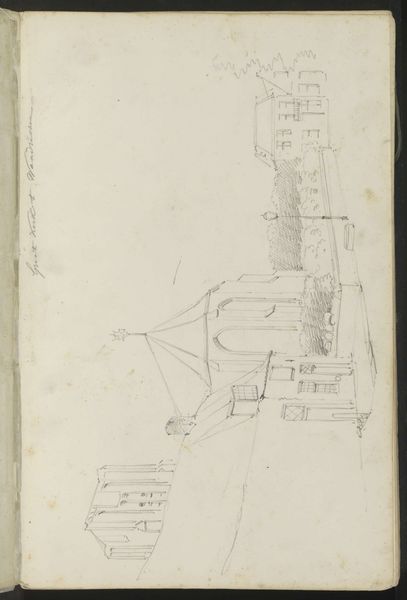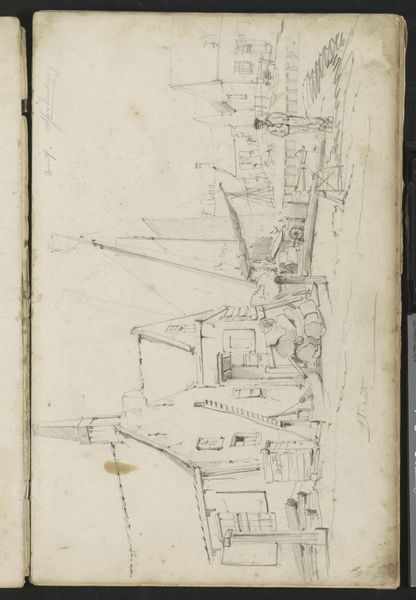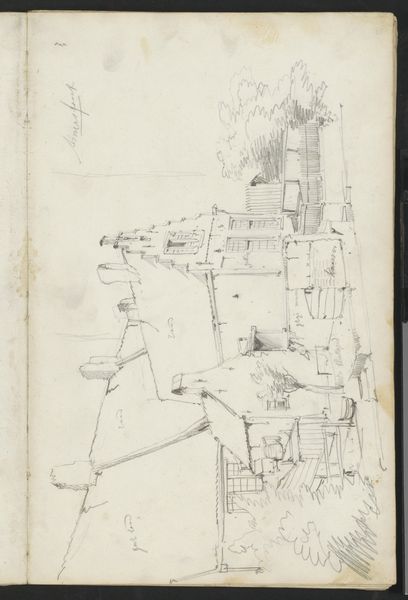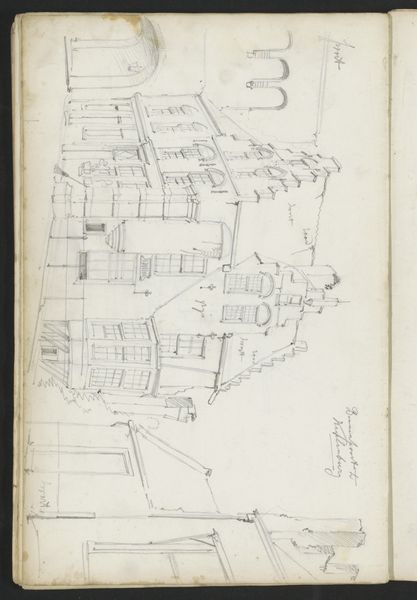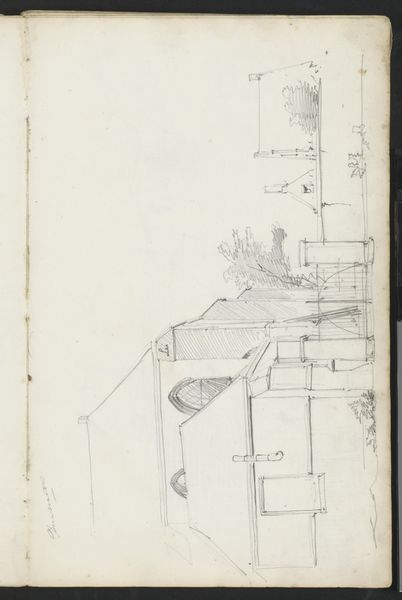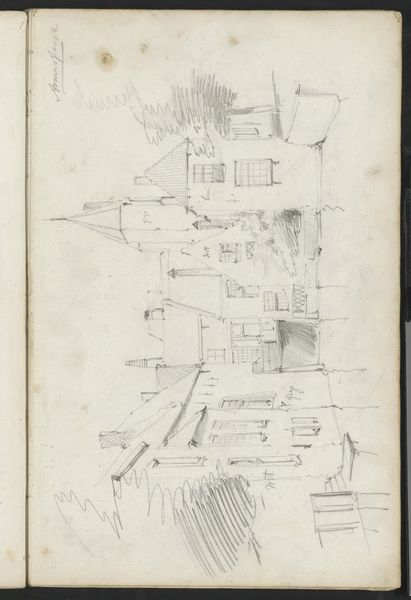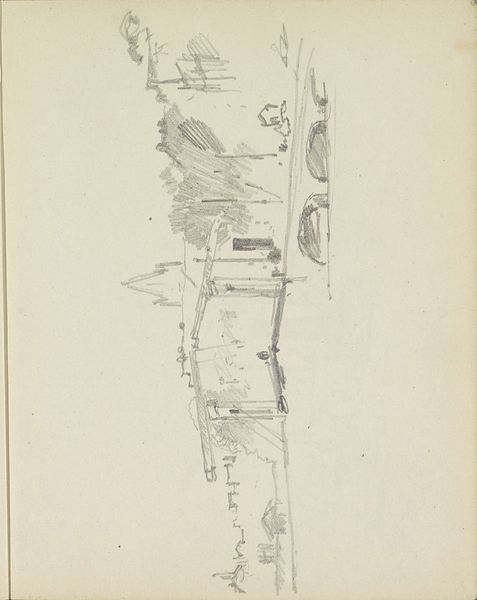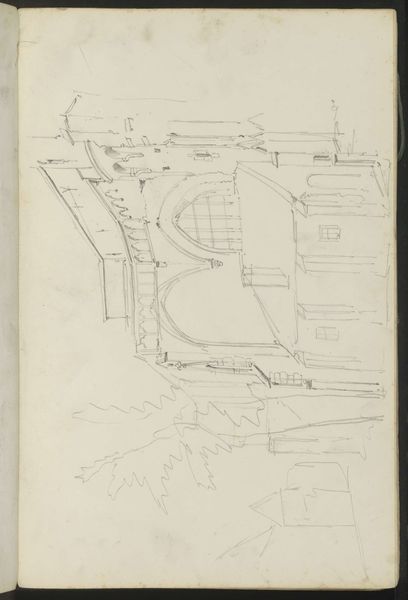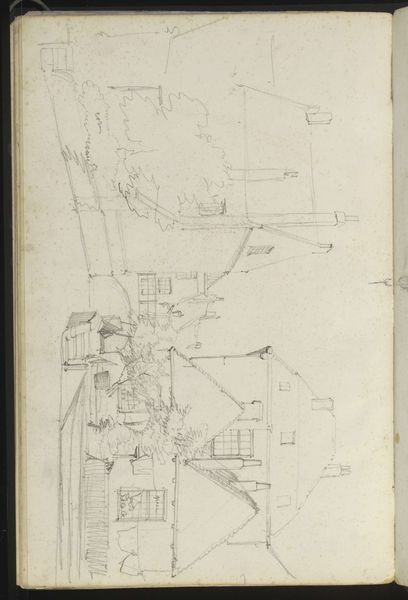
drawing, pencil
#
drawing
#
quirky sketch
#
mechanical pen drawing
#
pen sketch
#
sketch book
#
landscape
#
personal sketchbook
#
pen-ink sketch
#
pencil
#
pen work
#
sketchbook drawing
#
storyboard and sketchbook work
#
sketchbook art
#
realism
Copyright: Rijks Museum: Open Domain
Editor: Here we have Willem Koekkoek's drawing, "Woman and Dog in a Backyard in Spakenburg," dating between 1849 and 1895. It’s rendered in pencil, almost like a quick sketch in a notebook. I’m struck by how unrefined it is. What social elements contribute to your reading of this work? Curator: Considering its likely role as a sketchbook piece, we see a glimpse into the artist's process, perhaps exploring themes of domestic life within a specific locale. Spakenburg was a fishing village. How might its unique cultural identity have shaped the representation of everyday life? Editor: I see the dog and the woman as representations of a calm domesticity, which is pretty in line with traditional artistic ideals of the time. Is there something radical in depicting such a scene? Curator: On the surface, maybe not radical, but it invites consideration of class, gender, and location. Was Koekkoek simply observing, or was he, through the act of sketching this ordinary scene, engaging with then-contemporary dialogues about the representation of rural communities and their values? Does the sketch celebrate or critique Spakenburg's specificities? Editor: That's interesting – it reframes the work in my eyes from something simplistic into an actual cultural observation. So much from so little, really! Curator: Exactly. And this tension, between observation and commentary, is key to understanding the public role that even seemingly minor works can play. It invites us to contemplate how artists like Koekkoek negotiated the political dimensions of their imagery, even in sketches like these. Editor: That helps so much, because you contextualize a mundane moment as a visual symbol! Thanks for opening my eyes. Curator: My pleasure. Considering the socio-political aspects provides us all with deeper appreciation.
Comments
No comments
Be the first to comment and join the conversation on the ultimate creative platform.


